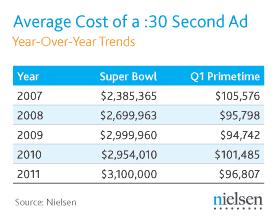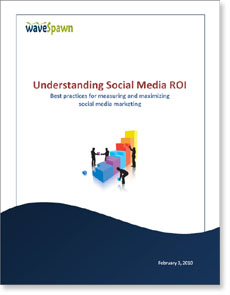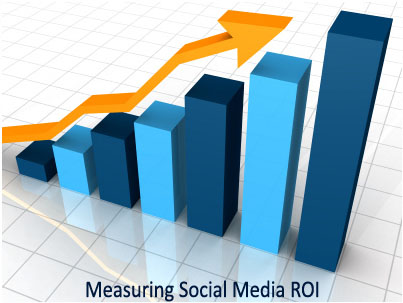Social selling with social media
 Increasingly, small businesses want to understand how to leverage social media to increase sales. In previous topics, we’ve discussed methods for creating a social media marketing strategy and using metrics to measure the return on your social media investment. Having a plan or roadmap should always be the first step in any marketing initiative including social media.
Increasingly, small businesses want to understand how to leverage social media to increase sales. In previous topics, we’ve discussed methods for creating a social media marketing strategy and using metrics to measure the return on your social media investment. Having a plan or roadmap should always be the first step in any marketing initiative including social media.
Can social media be an efficient, cost-effective channel for finding new customers and selling to business clients?
By now, you’ve probably heard the term social selling (or Sales 2.0). Social selling is about engaging prospects on their terms. It involves learning their marketing, communication, and buying preferences and then positioning yourself to be of value. Social selling (and social media) is not about blasting offers in your tweets and posts. With social selling, you need to recognize that the buying process is controlled by a better informed and more connected customer. Keep in mind, sales still remains a relationship-driven business. The concept of prospect networking through social media enables sales professionals to learn about and connect with potential customers. More importantly, they can tailor sales information and product specs to accommodate the needs and concerns of each individual rather than the mass – enabling relevance throughout the sales cycle.
The amount of prospect information available has increased the need for comprehensive sales intelligence. This generally brings together both traditional data and social media. It can be very beneficial for sales professionals to leverage the social web to simply listen, engage, and add value to the customer conversation. Being in the right place at the right time can create the top of mind status needed when the prospect is ready to buy.
Social media outlets are great places for starting conversations, but they’re not the only place to have them. When the time is right, take the conversation offline. With all of the modern conveniences and technical advances, still nothing can replicate the power of a face-to-face meeting.
The challenge with prospect networking and social selling is that it requires a lot of time and daily commitment. It’s impossible to automate messaging and conversations through social media. While many sales professionals don’t have interest in adding another “to do” item to their daily routine, finding the right balance is key. Each individual needs to assess their industry, audience, product, positioning, and price to form a strategy that fits their business and equally as important – their schedule.
If you have comments or questions, we’d love to hear from you. If you’d like more information on developing effective strategies for social selling, please contact us.


 It’s that time of year again – where advertisers can dip into their pockets to spend up as much as $4 million on a 30 second TV spot during Sunday’s Super Bowl. However, the average cost is only $3.5 million. That’s a rate of about $120,000 per second. Is this too much money to spend? What is the threshold?
It’s that time of year again – where advertisers can dip into their pockets to spend up as much as $4 million on a 30 second TV spot during Sunday’s Super Bowl. However, the average cost is only $3.5 million. That’s a rate of about $120,000 per second. Is this too much money to spend? What is the threshold? Is it wise to start a business endeavor without a plan? Most people wouldn’t build an office before they determined what their business would actually do. Without a strategy there is simply no structure, no clear objectives and no real way of determining its success.
Is it wise to start a business endeavor without a plan? Most people wouldn’t build an office before they determined what their business would actually do. Without a strategy there is simply no structure, no clear objectives and no real way of determining its success. Branding, for many companies, is low on their priority list – or perhaps even off the radar screen. Many businesses simply do not give sufficient focus to their brand initiatives. How many times have you heard – branding is too intangible or “if you can’t measure it, you can’t manage it”? Since branding isn’t directly reflected on a company’s balance sheet or financial statements, it’ often overlooked.
Branding, for many companies, is low on their priority list – or perhaps even off the radar screen. Many businesses simply do not give sufficient focus to their brand initiatives. How many times have you heard – branding is too intangible or “if you can’t measure it, you can’t manage it”? Since branding isn’t directly reflected on a company’s balance sheet or financial statements, it’ often overlooked. Facebook announced it will simplify their privacy settings for users. After feeling the pressure from large groups of protestors, Facebook founder Mark Zuckerberg said “We needed to simplify controls… We want people to be able to share information in the way that they want.”
Facebook announced it will simplify their privacy settings for users. After feeling the pressure from large groups of protestors, Facebook founder Mark Zuckerberg said “We needed to simplify controls… We want people to be able to share information in the way that they want.” Have you ever noticed how many business-related social media accounts have little, if any, postings or messages? You know the ones… they hastily ran out and setup a corporate Facebook, Twitter, YouTube, and blog account without a plan or clue as to what they were doing. Somewhere along the way they strayed from logic. It’s as if they’re proclaiming “hey we’re not only slackers, but we’re cutting edge slackers.”
Have you ever noticed how many business-related social media accounts have little, if any, postings or messages? You know the ones… they hastily ran out and setup a corporate Facebook, Twitter, YouTube, and blog account without a plan or clue as to what they were doing. Somewhere along the way they strayed from logic. It’s as if they’re proclaiming “hey we’re not only slackers, but we’re cutting edge slackers.”
 For many small businesses, measuring the return on investment (ROI) for social media is a mystery. While some of these businesses actively engage in blogging, tweeting, and perhaps even Facebook, they have no idea on how to gauge the effectiveness of their efforts. The remaining businesses that have not entered the social media frenzy are hesitant to get started because they too are looking for an accurate method of determining the ROI or impact of their social campaigns.
For many small businesses, measuring the return on investment (ROI) for social media is a mystery. While some of these businesses actively engage in blogging, tweeting, and perhaps even Facebook, they have no idea on how to gauge the effectiveness of their efforts. The remaining businesses that have not entered the social media frenzy are hesitant to get started because they too are looking for an accurate method of determining the ROI or impact of their social campaigns.